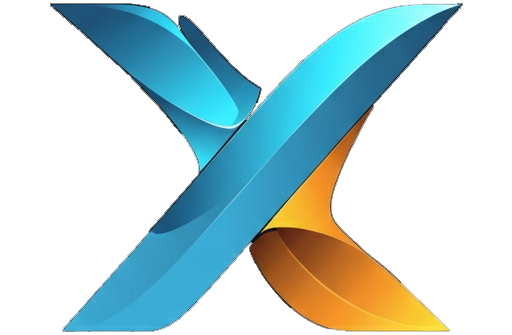The landscape of finance is undergoing a seismic shift. Cryptocurrencies, once considered the domain of tech enthusiasts and futurists, are now stepping into the limelight of global financial systems. Meanwhile, traditional finance, with its centuries-old foundations, is finding ways to adapt and evolve. But what lies at the intersection of these two worlds? This blog explores how crypto and traditional finance are converging, the benefits and challenges of this union, and what the future holds for both industries.
The Evolution of Finance
Before we examine how crypto and traditional finance intertwine, it’s essential to understand their foundations.
Traditional Finance
Traditional finance is the well-rooted system we’ve relied on for decades. It includes centralized banking systems, stock exchanges, and institutions that govern financial activity like the Federal Reserve or the European Central Bank. These institutions act as intermediaries, ensuring stability and regulation while facilitating lending, investments, and economic growth.
While effective, this system can sometimes be cumbersome, limiting access for certain individuals and regions. Additionally, reliance on centralized authorities poses transparency and efficiency challenges.
The Rise of Crypto
Cryptocurrencies, powered by blockchain technology, emerged in the wake of the 2008 financial crisis. Bitcoin was introduced as a decentralized alternative, removing middlemen and enabling peer-to-peer transactions. Over the past decade, crypto has evolved from being a fringe concept into a trillion-dollar ecosystem encompassing assets like Ethereum, stablecoins, non-fungible tokens (NFTs), and decentralized finance (DeFi).
The promise of faster transactions, global accessibility, and reduced costs has turned cryptocurrency into a disruptive force within the financial sector.
Convergence of Crypto and Traditional Finance
Banks Exploring Crypto
Traditional financial institutions, from JPMorgan Chase to Deutsche Bank, are now actively engaging with crypto. These firms are building teams to oversee digital assets, experimenting with blockchain to streamline transactions, and launching crypto custody services. For example, Bank of New York Mellon now provides custodial services for cryptocurrency, marking a significant step for institutional adoption.
Central Bank Digital Currencies (CBDCs)
One of the most noticeable overlaps of crypto and traditional finance is the rise of Central Bank Digital Currencies (CBDCs). Unlike decentralized cryptocurrencies, CBDCs are issued and controlled by central banks. Countries like China, Sweden, and the Bahamas are already piloting their versions of CBDCs, using the underlying blockchain technology to enhance payments systems while maintaining centralized governance.
Payment Gateways
Fintech companies like PayPal and Square are driving further convergence by integrating cryptocurrency payment options into their platforms. This bridge allows users to buy, sell, and transact in crypto seamlessly alongside traditional fiat currencies.
Regulation is Catching Up
The convergence of crypto and traditional finance also signals the arrival of regulations. Governments worldwide, from the United States to the European Union, are introducing frameworks to integrate cryptocurrencies into the existing financial system securely. Measures like anti-money laundering (AML) compliance and know-your-customer (KYC) requirements are becoming industry expectations.
Benefits of Integration
Increased Accessibility
By merging crypto with traditional finance, a broader portion of the global population can actively participate in the financial ecosystem. Cryptocurrencies particularly benefit the unbanked by offering financial services without the need for traditional bank accounts.
Transaction Efficiency
Traditional finance relies on complex systems to process cross-border transactions, which can take days or incur steep fees. Cryptocurrencies significantly speed up this process while reducing associated costs.
Financial Inclusion
The decentralized nature of cryptocurrencies aligns with the principles of democratizing finance. Both individuals and institutions benefit from increased transparency and reduced reliance on intermediaries.
Investment Opportunities
The integration of crypto into traditional finance creates hybrid financial products, such as Bitcoin ETFs, which allow traditional investors to enter the crypto market without directly owning digital assets.
Key Challenges
Scalability
Cryptocurrencies like Bitcoin and Ethereum, while innovative, still face scalability challenges. High transaction costs and slow processing speeds hinder mass adoption.
Regulatory Ambiguity
While regulatory developments are underway, the lack of consistent global standards creates uncertainty for both crypto enthusiasts and traditional institutions eager to adopt digital assets. This ambiguity can slow innovation and adoption.
Security Risks
As the two systems converge, new cybersecurity risks arise. Cryptocurrencies’ decentralized nature makes them susceptible to hacks and scams, while centralized authorities must mitigate risks of fraudulent activity.
Technological Complexity
For many traditional financial institutions, blockchain and cryptocurrency present new, complex technologies that require significant investment and education.
What Comes Next
The Role of Blockchain
The convergence of crypto and traditional finance is a signal of blockchain’s growing importance. Beyond cryptocurrencies, blockchain holds the potential to alter stock issuance, supply chain tracking, and even real estate ownership records.
Hybrid Finance
Future financial models may combine the strengths of both systems. Imagine a world where cross-border payments leverage blockchain’s speed, but centralized institutions provide security and regulation.
Integration of Artificial Intelligence
AI will play a critical role in ensuring that these systems function harmoniously. For example, machine learning algorithms can dynamically assess the risks associated with both digital and traditional assets, enabling smarter investments.
Widespread Adoption of DeFi
Decentralized Finance (DeFi) is a potential game-changer. By creating a completely open financial system powered by blockchain, DeFi could disrupt traditional services such as lending, borrowing, and asset trading.
Education and Adaptation
For mass adoption to succeed, financial literacy is crucial. Both consumers and industry professionals need reliable resources to understand how to engage with this hybrid financial ecosystem effectively.
Read More👉 Davos 2025: World Economic Forum – A Glimpse into the Future
Seizing the Opportunities
The merging of crypto and traditional finance is no longer a question of “if,” but a matter of “how” and “when.” This transformation represents an opportunity for businesses and individuals alike to innovate, democratize access to financial systems, and reimagine the possibilities of money.
For those eager to stay ahead of the curve, the key is to remain adaptable, invest in education, and explore ways to harness the power of crypto and blockchain within established systems.
If you’re ready to take the next step, now is the time to explore how your business can innovate with blockchain and cryptocurrency.

